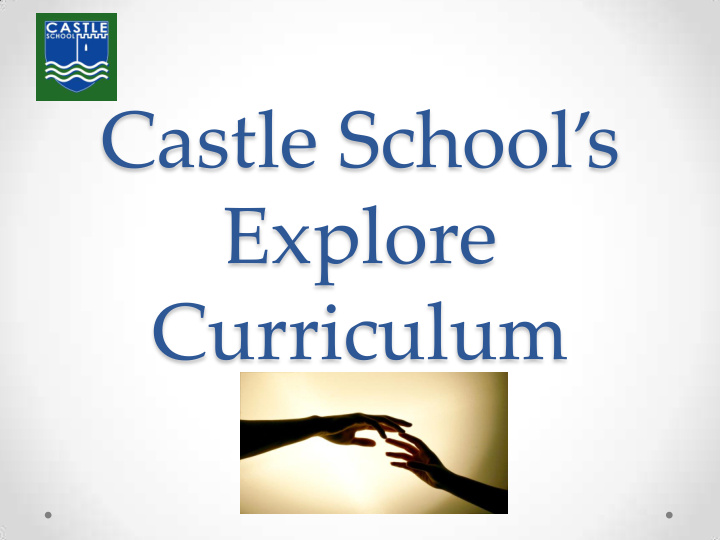



Castle School’s Explore Curriculum
At Castle School students working at the earliest stages of development explore their senses through an individual programme and 1:1 support
They focus on 4 key areas: Physical Cognition developmentt
Our multidisciplinary team help with their communication, physical development and fine and gross motor development. They may work individually with a therapist, or may have a programme for the class team to carry out.
Their curriculum is based around exploring their senses and their ability to interact with their environment: Interaction Vision Hearing Touch Response Awareness Vestibular Proprioception
They experience different areas, for example: Explore Light room room
Outdoor Swimming area pool Trampoline
They explore different interventions: Tacpac
Each of our ‘Explore’ classes are supported by trained interveners. Each intervenor has completed a week of training with SENSE and is aware of the impact that sensory impairment may have on learning. Interveners work with students using hand under hand support, they communicate with ‘on body ’ signing and wear personal identifiers to aid recognition. Class teams work closely together to ensure that the environment and the activity will allow development and learning.
Morning routines Each complex needs class uses a morning script to cue students into the day.
Each student has ‘Core Targets’. These are set from their ‘Routes for Learning’ progress and their Statement or Education, health and Care plan objectives. Progress is updated in November and March and reviewed at the end of each term and at the EHC review. Moving On Curriculum ‘ photo stream’ evidence for one of our students
Progress is evidenced through ‘Learning Journeys’’ from reception to Key Stage 3, and through ‘Moving On’ photo stream and text evidence in Key Stage 4 and 6th Form. Learning Journey evidence We are currently trialling ‘2 Build a Profile’ evidence gathering software.
Assessment is on going and is tracked through a needs led pathway called ‘Routes for Learning’ Routes for Learning’ is cross referenced to Early Year Foundation Stage and to P levels 1 — 3ii for our end of year summative reporting.
Progress through time is demonstrated through our ‘Routes for Learning graphs. Progress is tracked through 4 stages: responding occasionally, frequently, consistently; and generalised where response occurs in different places and with different people. Evidence of generalised responses are hyperlinked to our graph, to be viewed when using a computer. A Routes for Learning graph. Hyperlinked evidence is in blue.
Data
As our students learn more about who they are, where they are and what they can do, they may begin to work within: Early learning goals in Reception and Key Stage 1 National Curriculum in Key Stage 2 and 3 Moving on in Key Stage 4 and 6 th form
And then go on to Horizon, home support or Helping Hands
Recommend
More recommend